High praise for houses of the holy
When cathedral burnout threatens, don’t miss these places of worship in Europe.
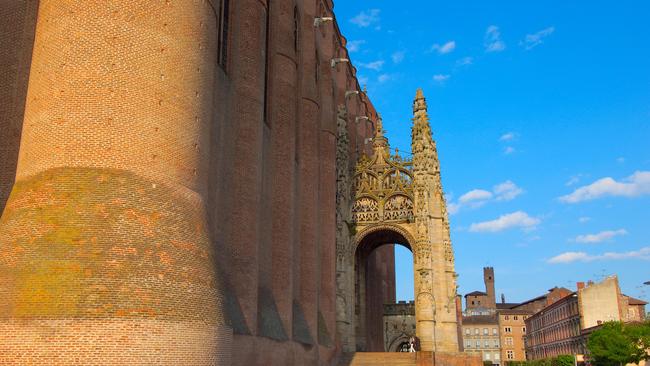
Paris’s Notre Dame, tick. St Paul’s in London, done. Cologne Cathedral, been there. When travelling in Europe, it’s easy to reach church overload. But once you’ve strolled the hushed alcoves of the continent’s most-visited religious edifices, there are some truly spectacular places of worship that should not be missed. Remove your hat, lower your voice to a whisper and step inside these hallowed shrines.
GERMANY
The ultimate: Cologne Cathedral
The must-see: St Peter’s, Munich
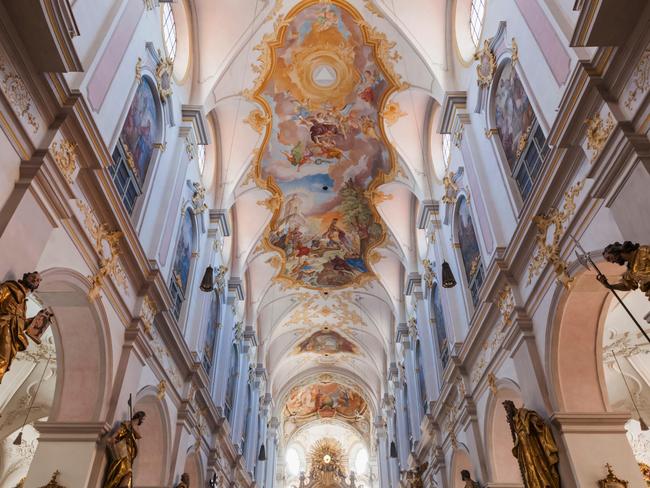
The town that celebrates the swagger of Oktoberfest doesn’t get too reverential about anything, so locals passing by barely give Munich’s longest-established church a second glance. It’s just Old Peter to them. Built in the late 1100s, Kirche St Peter is an architectural history lesson. The Romanesque original burnt down in the 1300s and was rebuilt in gothic style. The Renaissance gave it a steeple (which, after a 300-step climb, gives the best view of Munich), the choir was baroque and later they did it over completely in rococo style. Fortunately, much of its glorious interior was salvageable after being pounded in World War II. The ornate ceiling is by renowned baroque artist Johann Baptist Zimmermann, and the signature sculpture of St Peter is by Erasmus Grasser, whose work is found in many significant Munich buildings. Keep an eye out for Old Peter’s most obscure relic, the jewel-covered gilded skeleton of St Munditia. Martyred (by beheading) in about 310AD, she’s the patron saint of spinsters.
■ muenchen.de/int/en/sights/churches/church-of-st-peter
JEREMY BOURKE
SPAIN
The ultimate: Sagrada Familia, Barcelona
The must-see: Basilica de la Macarena, Seville

For a uniquely Spanish experience, head to the northernmost part of Seville’s centre. Next to the remaining section of the city’s 12th-century Moorish walls is the Basilica de la Macarena. The mustard-coloured place of worship was built in the 1940s to replace an earlier church that was destroyed in the Spanish Civil War, but you’re not here to see that. Above the altar is the 16th-century statue of La Macarena, one of Spain’s most revered depictions of The Virgin and patron saint of gypsies and bullfighters (the late matador Joselito El Gallo even bought her five emerald brooches to wear). She’s the star of the city’s Holy Week (Semana Santa) processions, when members of the Brotherhood of La Esperanza, her guardians, parade the tearstained, soulful image around town for 14 hours on Good Friday. You can find out more about the statue and brotherhood in the basilica’s museum.
VICTORIA TROTT
BELGIUM
The ultimate: Cathedral of Our Lady, Antwerp
The must-see: Basilica of the Holy Blood, Bruges
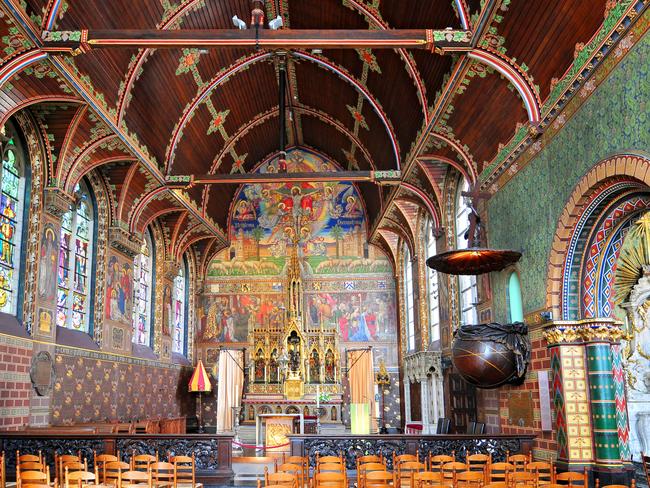
Wedged against the magnificent 13th-century town hall in Bruges’ Burg Square, the squat Basilica of the Holy Blood attracts the eye thanks to its ornately sculpted facade and gold statues. This former chapel of the Counts of Flanders, whose palace was the current town hall, is home to one of Belgium’s most important religious relics — a phial of Precious Blood, said to have been collected after Christ’s death by Joseph of Arimathea and brought back to the city in 1150 (although research has found no evidence of it before 1250). The basilica has two parts: on the ground floor is the Chapel of St Basil, the only Romanesque church in West Flanders, and on the first floor, accessed by a winding monumental staircase, the neo-gothic Chapel of the Holy Blood, where the relic is kept in a silver tabernacle and available to view every Friday.
VICTORIA TROTT
FINLAND
The ultimate: Helsinki Cathedral
The must-see: Kamppi Chapel
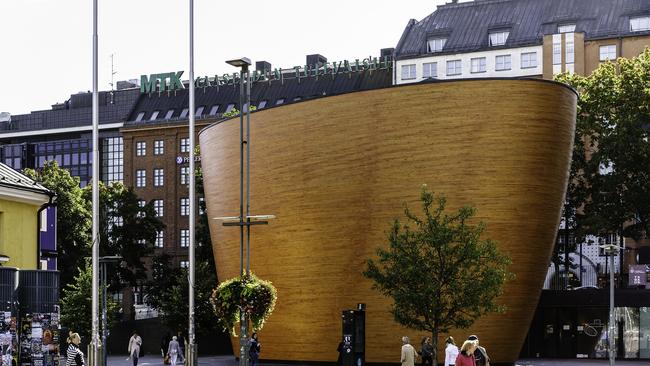
Lightly tethered to Helsinki’s busy Narinkka Square this unconventional, modernist chapel appears to float among bustling commuters like a surreal timber ship. Also known as the chapel of silence, it opened in 2012, which coincided with Helsinki’s stint as World Design Capital, and is meant as a place of quiet contemplation away from the bustle of the city. The striking curved wooden facade of spruce is windowless. Inside are unadorned concrete floors, bare wooden pews and enveloping walls of alder marked only by the soft northern sunlight falling from a skylight running around the ceiling’s edge. Worshippers — and I use this term loosely as this is an ecumenical space — sit quietly in prayer or thought. Photography is not allowed and talkative visitors will be shushed without hesitation. If you want to chat or require consolation, there’s generally someone outside from one of the city’s Lutheran churches or the Department of Social Services and Health Care. Open daily.
CHRISTINE McCABE
DENMARK
The ultimate: Frederik’s Church (The Marble Church), Copenhagen
The must-see: Roskilde Domkirke

This spire-crowned, red-brick gothic cathedral in Denmark’s 1000-year-old former capital is only 30 minutes by train from Copenhagen Central. The 100-year construction of the church began in the 1170s at this Viking-age town on the fjord. The UNESCO World Heritage-listed Domkirke’s rebuilds and additions (porches, royal chapels) trace Danish history. Now a trove of elaborate tombs, fading frescoes and flying buttresses, it was named official royal burial site early in the 1400s, but far older monarchs here include Viking king Harald Bluetooth (died AD985), who built the original wooden church, and his son, Sweyn Forkbeard, conqueror of England (died 1014). Canute, Danish king of England, murdered his brother-in-law here; his penance built the new stone church. The veined-marble effigy of Queen Margrethe I, with gold-filigreed coronet, rests above her sculpted, blue and gold-decorated sarcophagus (died 1412). The church is currently monitoring a rare peregrine falcon, hunting from one of its towers.
JUDITH ELEN
FRANCE
The ultimate: Notre-Dame Cathedral, Paris
The must-see: Sainte-Cecile Cathedral, Albi
Towering above the terracotta-tiled roofs of Albi in southwest France, UNESCO World Heritage-listed Sainte-Cecile is the world’s largest brick-built cathedral. Dating from 1282, its unmistakably fortress-like appearance, was a symbol of the strength of the Catholic Church in the face of the Cathar heretics. Sainte-Cecile is the only cathedral in Europe whose interior walls and ceiling are decorated in their entirety; those on the ceiling are the largest collection of Italian Renaissance paintings created in France. The vast mural of The Last Judgment beneath the organ, attributed to 15th-century Flemish masters, is the largest and oldest-known interpretation of this famous scene. In the choir are 200 painted stone statues, the work of Burgundian masters and the most important collection of their kind in France from the late Middle Ages. Next door, the bishop’s palace is home to an excellent, comprehensive collection of works by Albi-born Henri de Toulouse-Lautrec.
VICTORIA TROTT
HUNGARY
The ultimate: St Stephen’s Basilica, Budapest
The must-see: Dohany St Synagogue, Budapest

In the 19th century, a quarter of all Budapest residents were Jewish, making the Hungarian capital home to Europe’s most integrated Jewish population. It makes sense, then, that it’s also home to Europe’s largest, and the world’s second-largest, synagogue, situated on Dohany Street in the heart of District VII. The “Great Synagogue” is a beguiling union of Byzantine, Moorish and romantic architecture, so immense it can (and often does) hold more than 3000 worshippers. It has suffered damage over its 160 years, but it has also undergone significant renovations thanks to the likes of Estee Lauder and Tony Curtis, both children of Hungarian Jews and notable benefactors of the Budapest establishment. While most synagogues are separate from places of burial, Dohany Street adjoins a mass grave containing the remains of more than 2280 people, placed here in the 1940s during German occupation. Today, the spot is marked by a Tree of Life memorial by Imre Varga, alongside a moving Holocaust museum and archives chronicling this sad chapter in Hungary’s history.
NATASHA DRAGUN
BRITAIN
The ultimate: St Paul’s Cathedral, London
The-must see: All Saints, Margaret Street, London
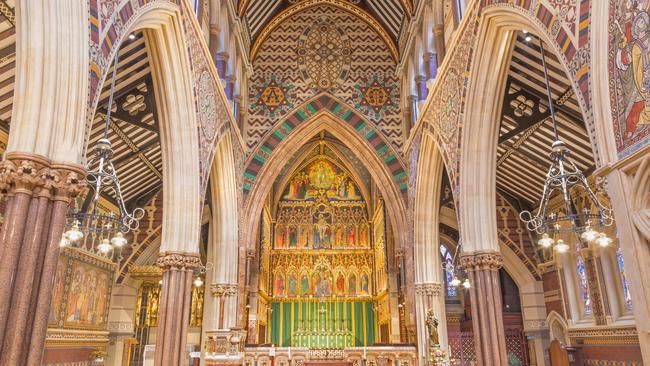
Hidden behind busy Oxford Street is one of the most fabulous examples of high Victorian gothic architecture in Britain. William Butterfield, the architect, oversaw its design over a period of 30 years. “It was here, in the 1850s, that the revolution in architecture began,” wrote British poet laureate John Betjeman. The patterned red and black brick exterior is impressive but it is inside that Butterfield has created his vision of paradise on Earth. On a sunny day the stained-glass windows sparkle, illuminating the tile paintings that decorate the walls. Geometric patterns, reminiscent of Moorish Spain, cover every surface: the floor, the marble font and pulpit. But it is the gold high altar, featuring Jesus surrounded by angels under a star-studded dome, that is centre stage. Opposite the church a Buddhist temple occupies the former choir school, also designed by Butterfield. “We visit them for Chinese New Year and they join us for Christmas carols,” says Father Bowie from Sydney.
■ allsaintsmargaretstreet.org.uk/
EITHNE NIGHTINGALE
ITALY
The ultimate: St Peter’s, Rome
The must-see: Santa Maria Assunta, Torcello, Venice

One of the glories of Italian ecclesiastical art, and one of the least visited, shimmers in her dome of gold mosaic — God’s “holy fire”, as Yeats called it — deep in the silent reaches of the Venetian lagoon. The blue-robed virgin is a little stony-faced, and the Christ child in her arms looks more like a dwarfish teenager than an infant, but she seems — in her austere remoteness, her monumental scale, and the almost modernist abstraction of her ethereal gold vault — to peer from her place high in the chancel towards eternity. Standing above the apostles in their white robes, the Virgin is a figure of awe. That’s by design. The people of this malarial islet were exiles from the barbarian invasions and the lagoon was a sanctuary. Their Hodgetria Virgin is, in part, a divine protectress: a power goddess. She is not the only thing of astounding beauty in this 7th-century basilica ornamented with mosaics from around the 11th. But she alone is worth the price, measured not in euros but ferry hours to tiny Torcello, of admission.
LUKE SLATTERY
GREECE
The ultimate: Church of St Panteleimon in Central, Athens
The must-see: Agios Dimitrios, Thessaloniki
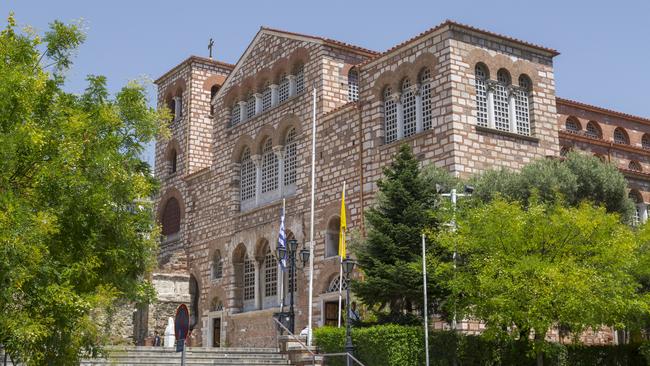
Converted to a mosque during Ottoman occupation in the 15th century, Agios Dimitrios is a conglomerate of art treasures, architecture and eras. Dedicated to the city’s patron saint, its original chapel, built in the 4th century over the ruins of ancient Roman baths, has a centuries-long history of disaster, rebuilds and additions. The facade, reconstructed mid-20th century, conceals a gleaming interior and a warren of stone spaces beneath. Inner-sanctuary steps lead to the crypt, which was uncovered after a 1917 fire that destroyed much of the city and restored in 1988 to exhibit artefacts, byzantine mosaics, columns with intricately crafted capitals and other relics from the basilica and excavations. Saint Dimitrios is believed to have been imprisoned, to have died and been buried here in AD303. In the five-aisled basilica above, light filters through arcaded, screened windows, and from lamps suspended on chains, illuminating gold and silver icons and shrines, veined Venetian marble, glittering mosaic-lined domes and ghostly faded saints on frescoed columns.
■ inad.gr
JUDITH ELEN
